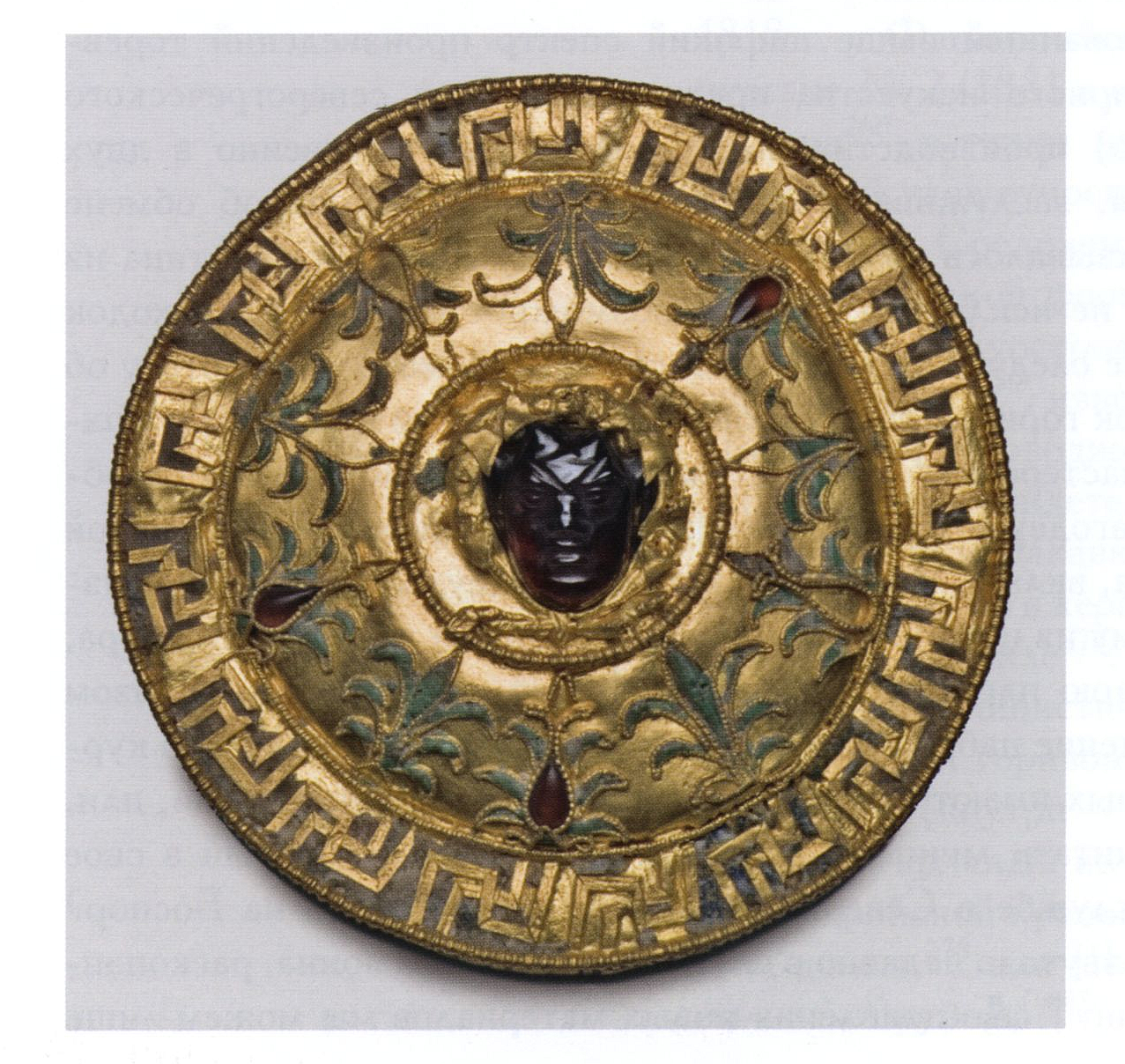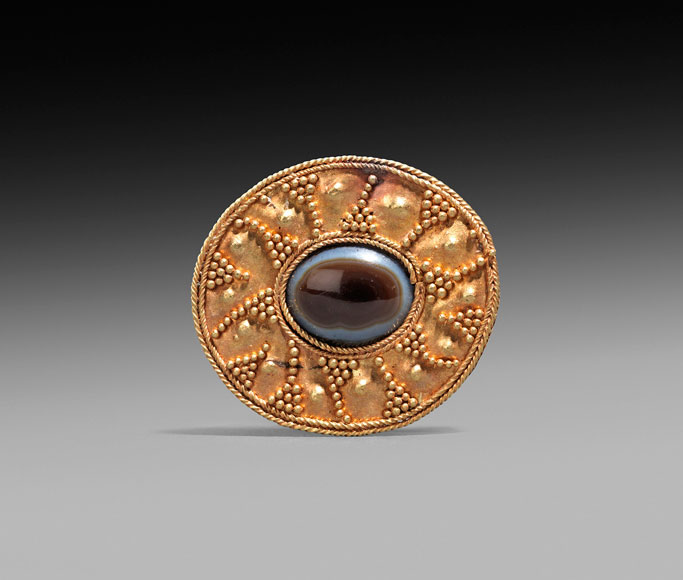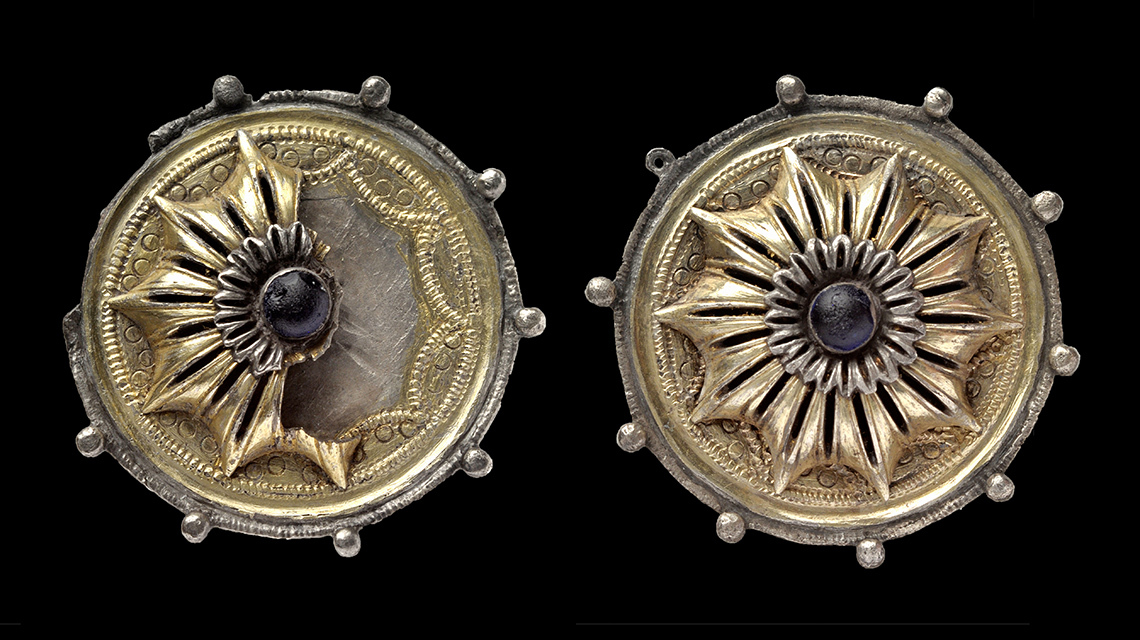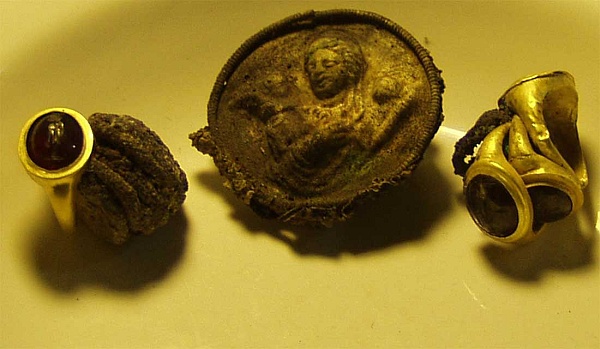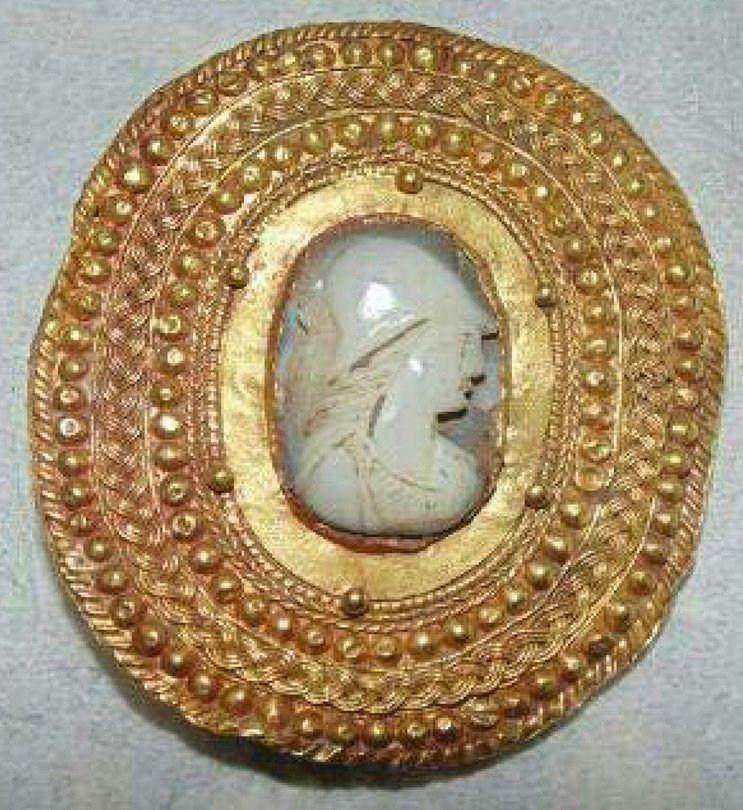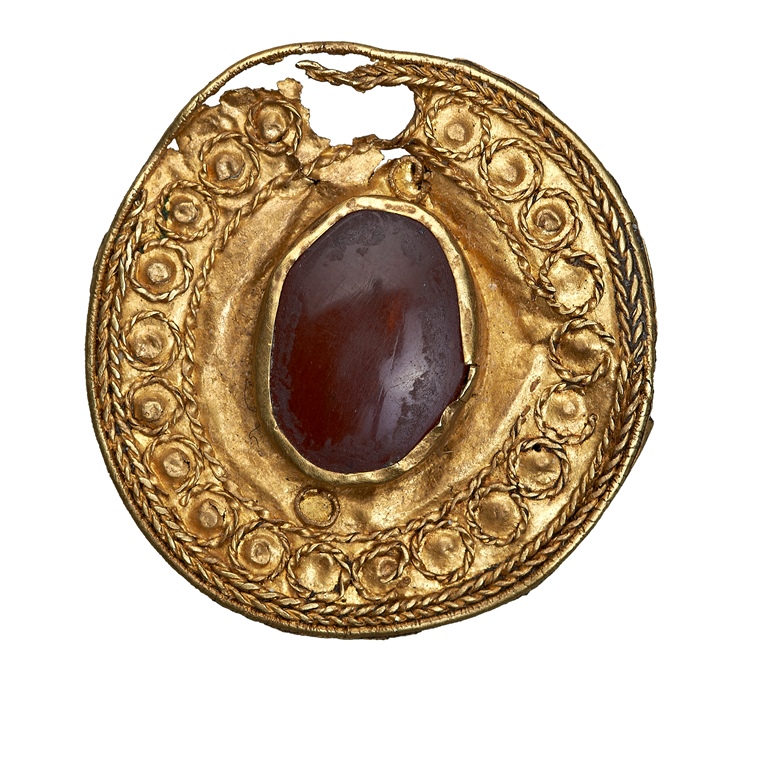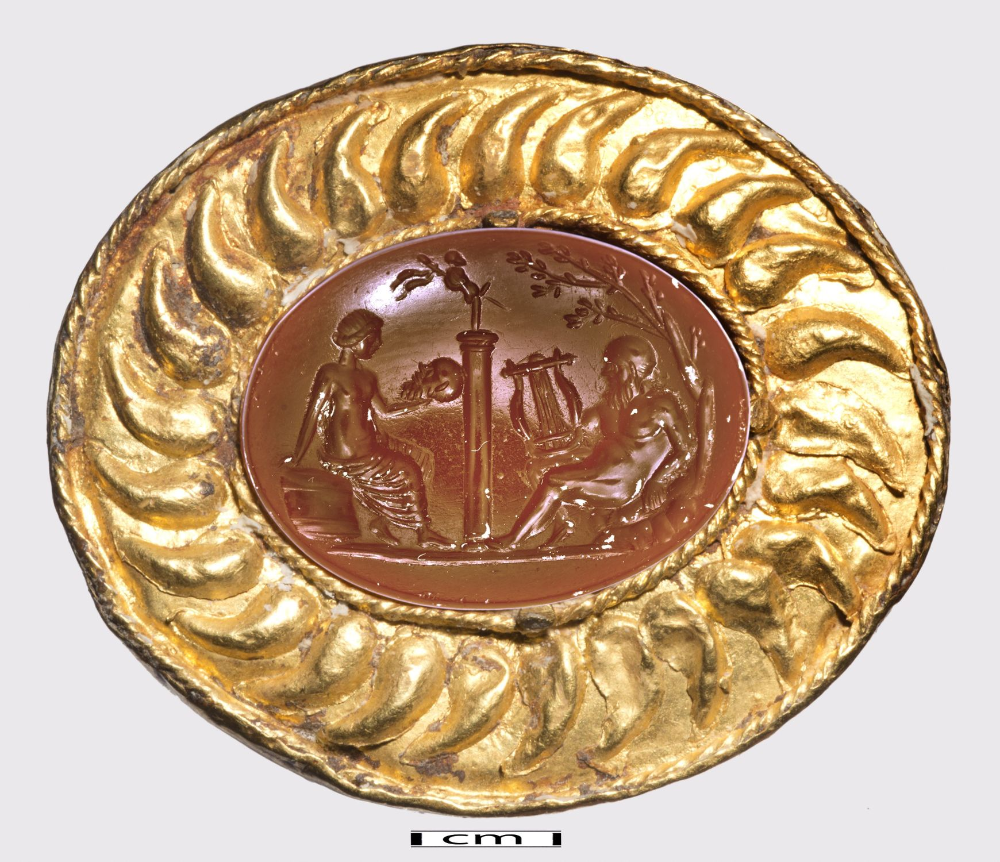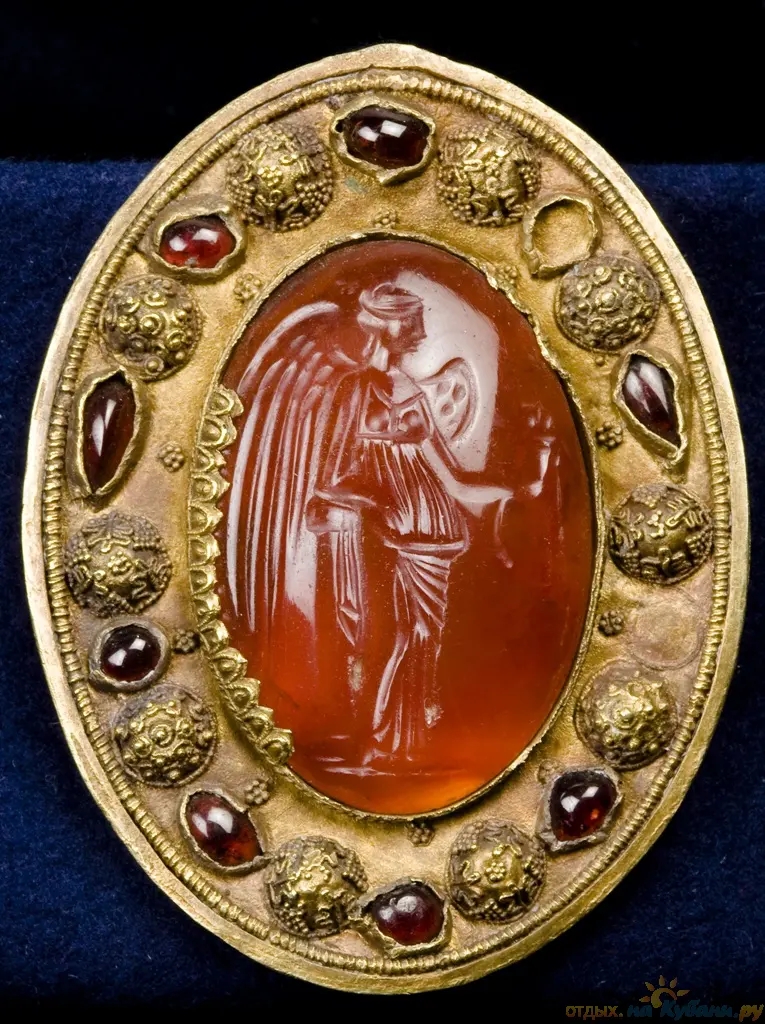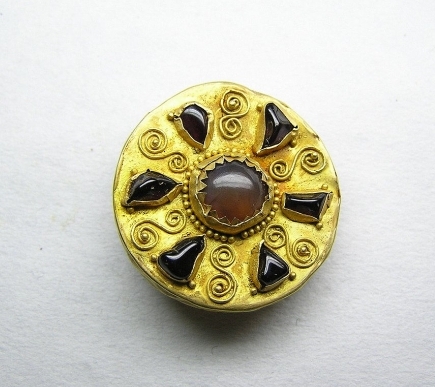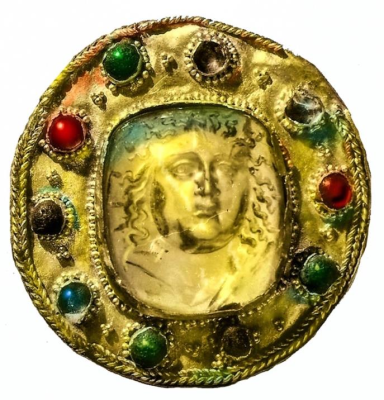
Gold medallion with citrine intaglio and the glass cabochons in the frame, from Lechkhumi village, Georgia.
The sepulcher of Dekhviri; Nino Sulava, Vaja Mamiashivli
Moambe, Bulletine of the Georgian National Museum, X (55-B):16-26, 2022
https://gnm-moambe.ge
“In the research process, the possibility of strengthening the opinion that was expressed earlier, during the research of the collection of gold objects kept in the Hermitage, specifically regarding the “Lechkhumi medallion”, was further highlighted. It entered the Hermitage of St. Petersburg in 1911 and immediately attracted the attention of many scientists due to its uniqueness. Its uniqueness lies in the fact that the intaglio is made with an unusual technique – on a hemispherical golden citrine, the protruding side of which is placed on the facade of the medallion, and on the back flat side, which is turned downward, an incision is made, which in turn is lined with gold leaf – foil; A kind of hologram effect is created. Cut stones made with this technique are known only from Georgia (Lucius Verus – from Tsikhisdziri and Acteon – from Armaziskhevi). The cut stone is inserted into a gold medallion, which is decorated with gems, braided ornament and tsvarati. Similar things are considered to be the insignia of the government, and as previously suggested – “in Lechkhum of the Late Antiquity period, we can see the small political unit that became the basis for the formation of the Lechkhum-Thakveri nobility, which is so persistently mentioned in the “Life of Kartli”” [The sepulcher of Dekhviri]
“This is in Lechkhumi village. A gold medallion found in the untitled, in which is inserted a completely unique gemma-intaglio made on citrine. The item is unique in terms of intaglio cutting – the stone has a hemispherical shape and is turned with the spherical side up. And the gemma or intaglio-cut is made on the flat side of the lower side of the stone. Gold foil is pressed into the intaglio. An image made in this way, which is Helios, creates a hologram effect. This unique item, whose analogues are few on the back of the world, was sold to the Hermitage by the finder or seller for 200 manats at the beginning of the 20th century. Studying this extraordinary thing started my scientific work, which I am very happy about. But we also have new opinions about this item, which we will introduce to Lechkhum residents soon” [Dekhviri Museum FB https://www.facebook.com]
To compare a gold brooch from Hermitage with citrine intaglio: Nero as Helios and glass inserts. 6,6/6,5 cm. Dated 1st-2nd century. Hermitage ГP-21629


